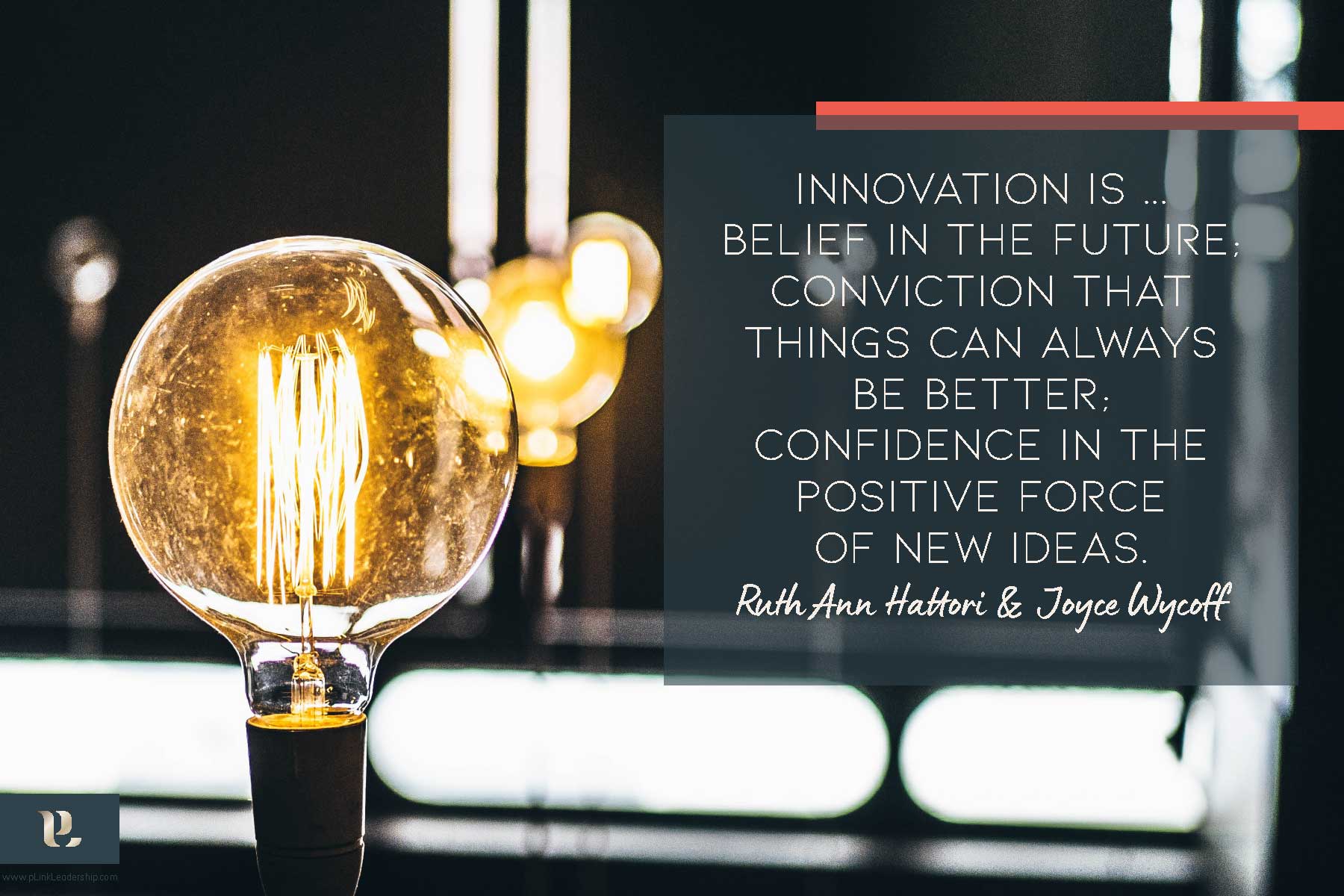“What good is an idea if it remains an idea? Try. Experiment. Iterate. Fail. Try again. Change the World.”
Simon Sinek
A client and I were recently discussing his desire for his team to do more “thinking outside the box.” When I asked what that might look like in action, he said that the team would bring more innovative ideas to address the challenges their team and company were experiencing.
“Ah, innovation,” I thought. While many of the leaders we work with are focused on business innovation as an imperative, personal innovation is just as critical to growth and remaining competitive. Particularly with the exponential change and disruption that is the current reality.
Personal innovation is taking the principles of innovation and applying them to your personal and professional life, being proactive about change and growth to avoid experiencing disruption. My next question was, “How are you leading innovation?”
He blinked a few times as he considered my question. “Well, I always listen when they have a new idea.”
Me: “That’s good. Where have you been innovative in your life or business in the last year?”
Client (tone a little sheepish): “I’m not sure that I have been. I don’t seem to have a lot of time.”
Me: “Before innovation can occur, there are several essential pre-conditions that must be present to encourage it.”
Client: “Tell me more….”
Growth, competitive advantage, and sustainability require an environment where innovation can flourish. Without certain pre-conditions, it’s almost impossible for innovation, business or personal, to be anything other than random. Here’s what’s needed.
- Time and Space for Reflection: There’s no question that time can be an obstacle, but without carving out time to think, imagine, and experiment, innovation is stymied. The mindset of “time to think is a luxury” needs to shift to “time to think is imperative.” Have you dedicated time on your schedule to create thinking time?
- Welcoming and Maximizing Diversity of Thought: Good ideas can come from everywhere. Innovation is a team sport, and different ideas and perspectives are critical. Where can you bring in new voices and perspectives to challenge the status quo/you?
- Creating Psychological Safety: Psychological Safety, a term coined by Amy C. Edmondson, refers to “an inter-personal climate where people feel able to express ideas, ask questions, quickly acknowledge a mistake, and raise concerns.” How do you encourage people (or yourself) to challenge each other and learn from different perspectives and ideas?
Imagine what’s possible by shaping the environment that allows innovation to flourish. Where do you need to be more innovative?
If you’d like to read more about this topic, here are some suggestions:
Teaming to Innovate – Amy C. Edmondson
Innovation to the Core – Peter Skarzynski and Rowan Givson



